Introduction to Bicycle Chain Lube: Why It Matters
A bicycle chain lube is an essential component of bike maintenance that ensures smooth operation, reduces wear, and extends the lifespan of your chain. Whether you’re a casual rider or a competitive cyclist, neglecting chain lubrication can lead to increased friction, premature wear, and even mechanical failure. Over time, dirt, grime, and moisture accumulate on the chain, creating a barrier that hinders performance. A high-quality bicycle chain lube not only protects against these elements but also enhances efficiency by reducing resistance during pedaling.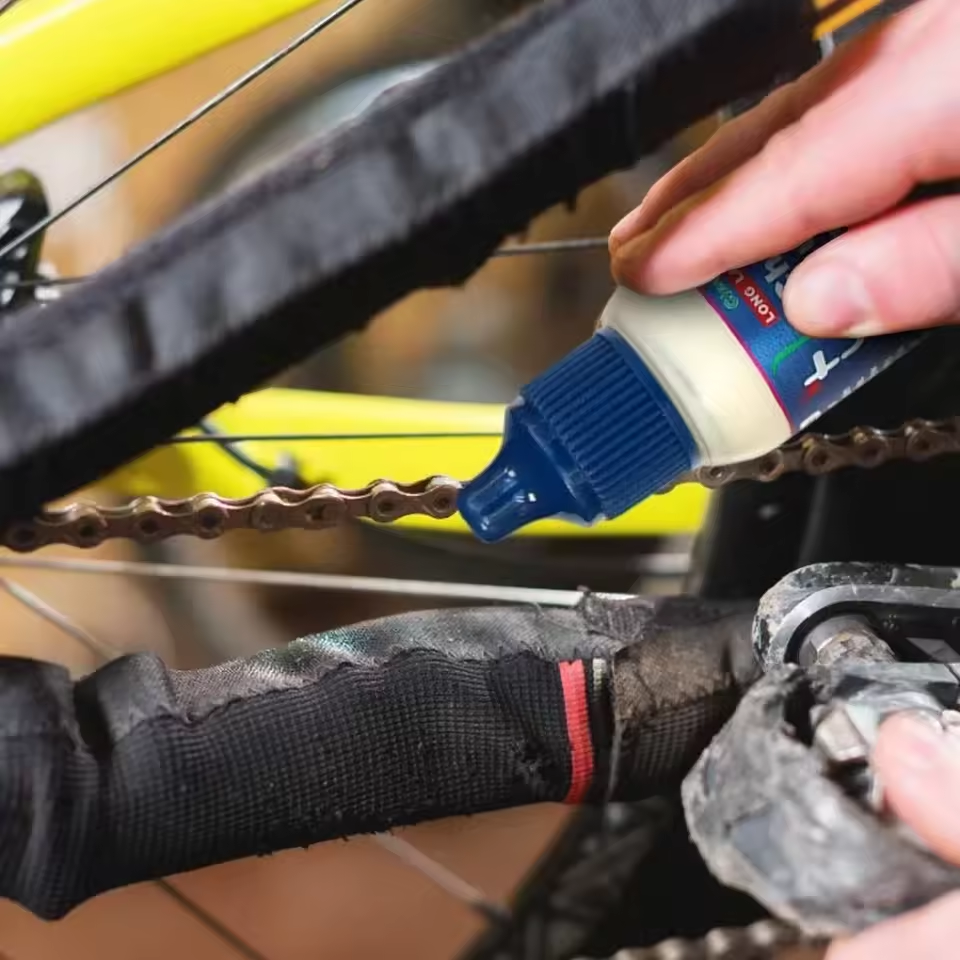
The benefits of using bicycle chain lube are manifold. It minimizes the risk of chain slippage, prevents rust and corrosion, and maintains the chain’s flexibility. Additionally, regular lubrication improves shifting performance and reduces the workload on other drivetrain components, such as the cassette and derailleurs. For mountain bikers, who often encounter muddy or wet conditions, a bicycle chain lube with water-resistant properties is particularly crucial. By understanding the role of chain lube and adopting a consistent maintenance routine, you can ensure your bike remains reliable and efficient for years to come.
Types of Bicycle Chain Lube and Their Uses
There are several types of bicycle chain lube, each designed for specific riding conditions and preferences. Here’s a breakdown of the most common options:
- Wet Lubes:
- Best for: Muddy, wet, or harsh weather conditions.
- Features: Thick consistency with additives to repel water and resist washing off.
- Drawbacks: Can attract more dirt in dry environments.
- Example: Ideal for mountain bikers tackling trails in rain or mud, as it forms a protective barrier against moisture and grit.
- Dry Lubes:
- Best for: Dry, dusty, or clean conditions.
- Features: Lightweight formula that reduces dirt buildup.
- Drawbacks: Less effective in wet environments.
- Example: Perfect for urban commuters who ride in sunny or arid climates, where excess grime is a concern.
- Ceramic Lubes:
- Best for: Competitive cyclists seeking maximum efficiency.
- Features: Contains ceramic particles for ultra-low friction and long-lasting protection.
- Drawbacks: Typically more expensive than other options.
- Example: Often used in professional races due to their ability to minimize resistance and maintain performance over extended rides.
- Wax-Based Lubes:
- Best for: Cyclists who prioritize cleanliness and performance.
- Features: Natural, biodegradable, and provides a smooth, quiet ride.
- Drawbacks: Requires more frequent reapplication.
- Example: A favorite among eco-conscious riders and those who want a residue-free chain after long rides.
- Multipurpose Lubes:
- Best for: Casual riders or those who don’t want to switch lubes seasonally.
- Features: Balanced formulation for moderate conditions.
- Drawbacks: May not perform as well in extreme weather.
- Example: A versatile choice for all-season use, especially for recreational cyclists who ride in varied conditions.
By understanding these types, you can select the bicycle chain lube that best suits your riding habits and environmental challenges.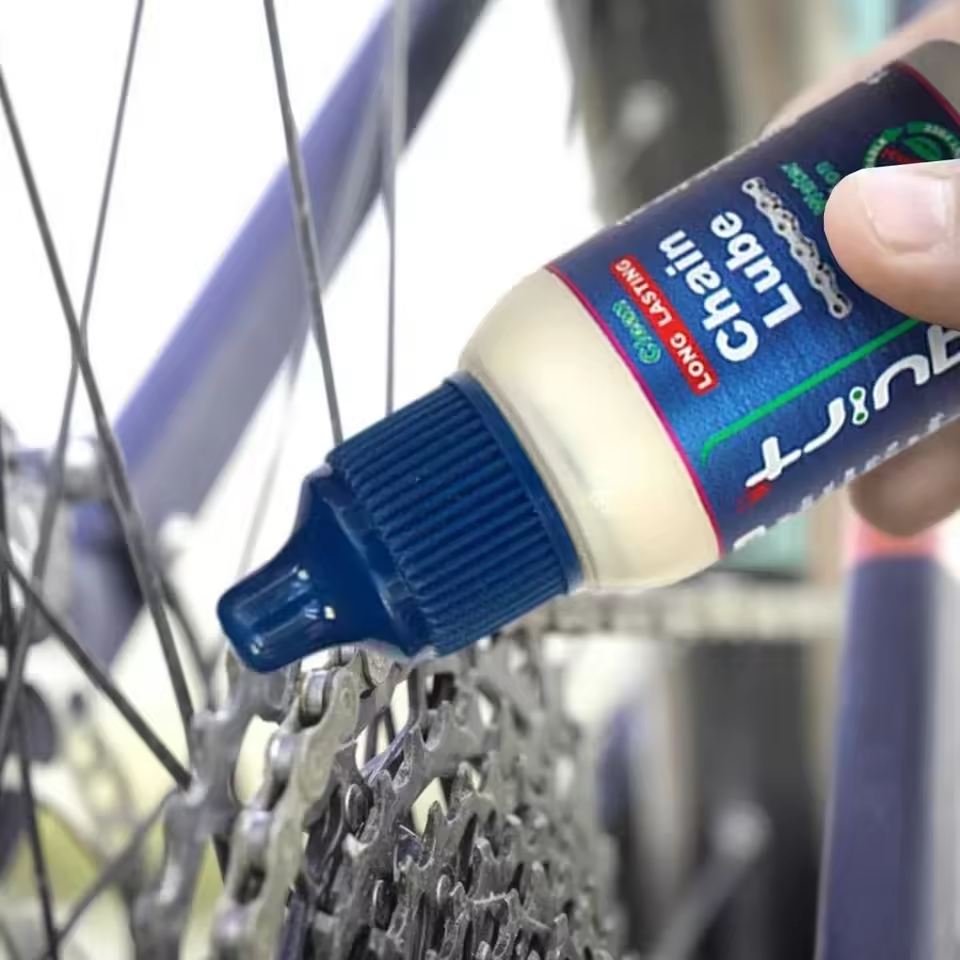
How to Choose the Best Bicycle Chain Lube for Your Bike
Selecting the ideal bicycle chain lube involves evaluating your needs and the product’s specifications. Here’s a step-by-step guide to help you make an informed decision:
- Assess Your Riding Conditions:
- Identify the primary environments you ride in (e.g., wet, dry, muddy).
- Match the lube type to these conditions for optimal performance.
- Check the Chain’s Material:
- Some chains are made of stainless steel or nickel-plated alloys, which may react differently to certain lubes.
- Avoid using acidic or solvent-based lubes on sensitive materials.
- Evaluate Viscosity and Longevity:
- Thicker lubes (e.g., wet lubes) last longer in harsh conditions but may require more frequent cleaning.
- Lightweight lubes (e.g., dry lubes) are easier to apply but may need reapplication after shorter distances.
- Consider Environmental Impact:
- Eco-conscious riders can opt for biodegradable or wax-based lubes to minimize environmental harm.
- Read Reviews and Brand Reputation:
- Research user feedback on popular brands like Finish Line, Pedro’s, and Park Tool.
- Prioritize brands with proven durability and performance.
- Test Compatibility with Existing Components:
- Ensure the lube doesn’t degrade rubber seals or plastic parts on your drivetrain.
- Trial Before Committing:
- Test a small amount of lube on your chain before fully applying it to check for compatibility and performance.
- Observe if it attracts dirt or causes stiffness, adjusting your choice accordingly.
By following these steps, you can find a bicycle chain lube that aligns with your needs and budget. Remember, investing in a high-quality lube pays off in the long run by reducing maintenance costs and extending your chain’s life.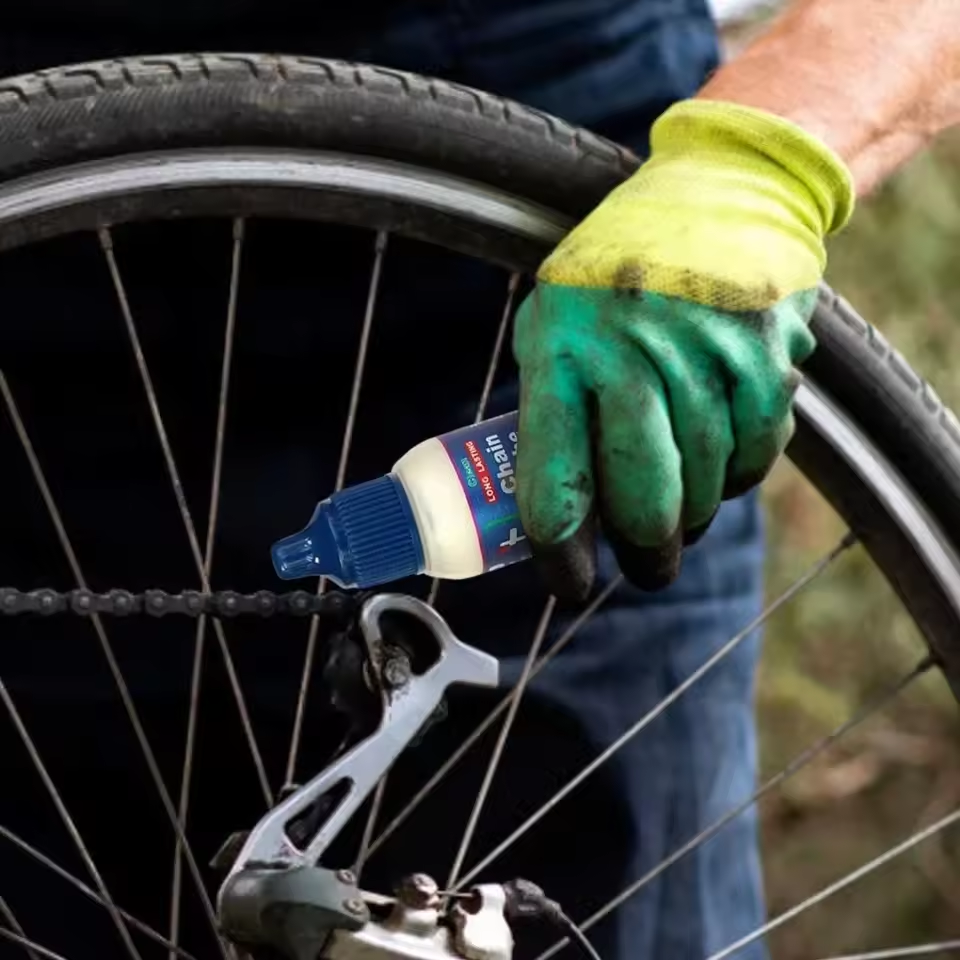
Step-by-Step Guide to Applying Bicycle Chain Lube
Applying bicycle chain lube correctly is critical to achieving its full benefits. Here’s a detailed process to follow:
- Clean the Chain First:
- Use a degreaser and a chain cleaning tool to remove dirt and old lube.
- Wipe the chain with a clean rag to ensure it’s completely dry. For best results, use a microfiber cloth to avoid lint buildup and ensure all surfaces are free of moisture, which could lead to rust over time.
- Apply the Lube Evenly:
- Hold the chain steady and apply a small amount of lube to each link.
- Rotate the pedals backward to distribute the lube across the rollers and pins. Focus on the inner plates and outer plates, as these are the primary contact points during pedaling.
- Let the Lube Penetrate:
- Allow the lube to sit for 5–10 minutes before wiping off excess.
- Excess lube attracts dirt, so use a dry cloth to remove any residue. Avoid over-lubricating, as this can create a sticky film that traps debris.
- Reapply as Needed:
- In dry conditions, reapply every 100–200 miles.
- In wet or muddy conditions, reapplication may be required more frequently. For example, after a long mountain biking session in rain, re-lubricate the chain immediately to prevent water from seeping into the joints.
- Inspect for Wear:
- Check the chain for signs of rust or wear after lubrication.
- Replace the chain if it shows significant stretching or damage. Use a chain wear tool to measure elongation accurately.
By following this method, you’ll ensure your chain remains well-lubricated and free of contaminants. Regular maintenance not only improves performance but also reduces the risk of costly repairs.
Maintenance Tips to Maximize Chain Lube Effectiveness
To get the most out of your bicycle chain lube, incorporate these maintenance practices into your routine:
- Clean the Chain Regularly:
- Use a chain-specific degreaser and a soft brush to remove grime.
- Clean the chain more frequently in harsh conditions. For example, mountain bikers should clean their chains after every trail session to prevent mud and grit from embedding into the links.
- Avoid Over-Lubrication:
- Apply only enough lube to coat the chain’s moving parts.
- Excess lube creates a sticky film that attracts dirt. A general rule is to apply a thin, even layer and wipe off any excess with a dry cloth to maintain a clean drivetrain.
- Store Your Bike Properly:
- Keep the bike in a dry, sheltered area to prevent moisture buildup.
- Cover the chain if storing the bike for extended periods. A breathable chain cover can protect against dust and humidity without trapping moisture.
- Monitor Chain Tension:
- A loose chain can cause uneven wear and reduce lube effectiveness.
- Adjust tension according to the manufacturer’s guidelines. For bikes without a derailleur, use a chain tensioner or adjust the rear wheel position to ensure proper alignment.
- Replace the Chain When Necessary:
- Chains stretch over time, reducing the lube’s ability to penetrate links.
- Use a chain wear tool to check for elongation before replacing. If the chain shows visible rust, pitting, or stiff links, it’s time for a replacement.
- Reapply Lube After Cleaning:
- Always reapply bicycle chain lube after a thorough cleaning to restore protection.
- Allow the chain to dry completely before lubricating to avoid diluting the lube with residual moisture.
- Use a Chain Wear Indicator:
- Invest in a chain wear indicator tool to track elongation accurately.
- Replace the chain when the indicator shows a 0.75% or greater stretch, as this compromises drivetrain performance and efficiency.
By adhering to these tips, you’ll maintain a clean, well-lubricated chain that performs at its best.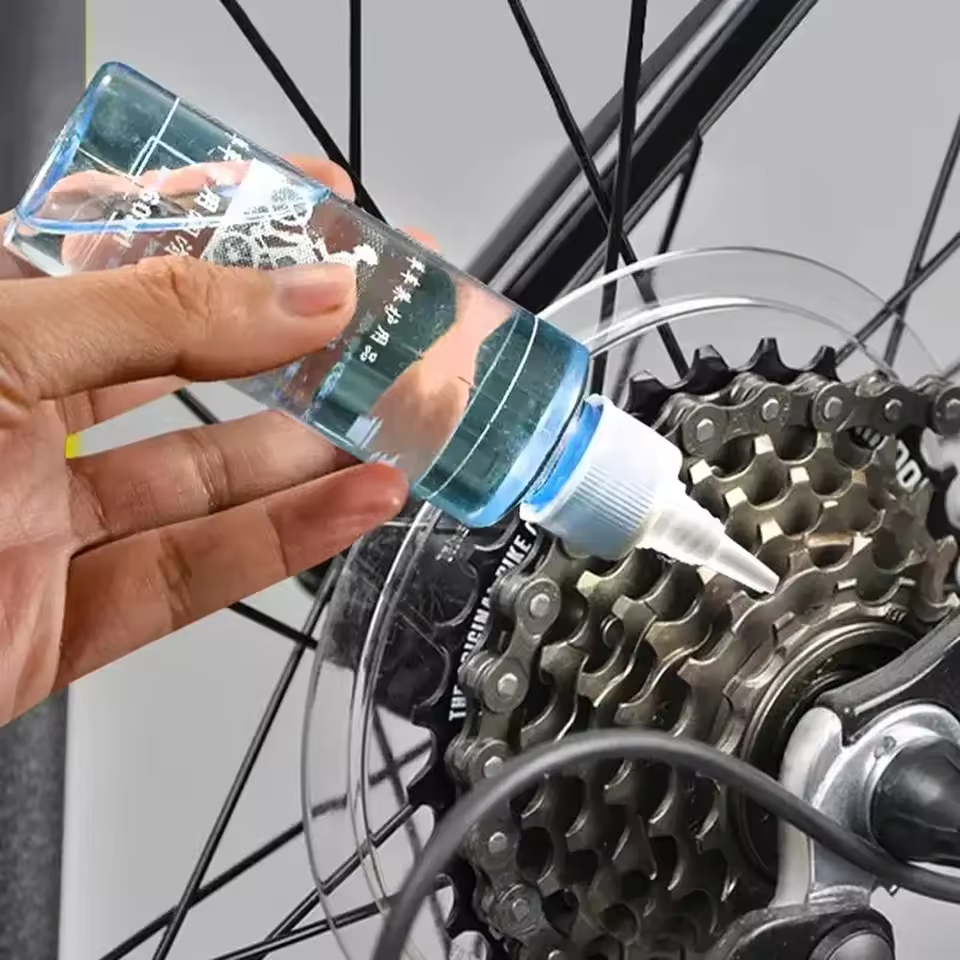
Common Mistakes to Avoid When Using Bicycle Chain Lube
Even experienced cyclists can make errors when applying bicycle chain lube. Here are some common pitfalls to avoid:
- Using the Wrong Lube for the Environment:
- Applying a dry lube in wet conditions leads to rapid wear and slippage. Wet lubes resist water but attract dirt in dry climates, creating a sticky residue. Always match the lube type to your riding conditions.
- Neglecting to Clean the Chain:
- Lube cannot adhere properly to a dirty chain, reducing its effectiveness. Old lube mixed with grime forms sludge, accelerating corrosion and wear. Clean the chain thoroughly before applying fresh lube.
- Over-Lubricating:
- Excess lube creates a mess and attracts debris, increasing friction. Apply only enough to coat the chain’s moving parts, then wipe off excess with a dry cloth to maintain a clean drivetrain.
- Ignoring Chain Wear:
- A worn chain cannot be salvaged with lube alone; replacement is necessary. Use a chain wear tool to check for elongation before replacing.
- Using Household Oils:
- Motor oil or cooking oil lacks the additives needed for bicycle chains and can cause damage. Stick to lube specifically formulated for bike chains.
- Failing to Reapply After Cleaning:
- Always reapply bicycle chain lube after a thorough cleaning to restore protection. Residual moisture or dirt can compromise the lube’s effectiveness if not addressed.
By avoiding these mistakes, you’ll ensure your bicycle chain lube works as intended, keeping your bike running smoothly.
The Role of a Bicycle Chain Tool in Chain Maintenance
While bicycle chain lube is vital for lubrication, a bicycle chain tool plays a complementary role in chain maintenance. This tool is used to:
- Remove and Install Chain Links:
- Essential for replacing a damaged or stretched chain.
- Check Chain Wear:
- Measures elongation to determine when replacement is needed.
- Adjust Chain Tension:
- Ensures the chain runs smoothly without sagging or binding.
A bicycle chain tool is an indispensable part of any cyclist’s toolkit, especially for those who perform regular maintenance. Pairing it with the right bicycle chain lube ensures your chain remains in optimal condition.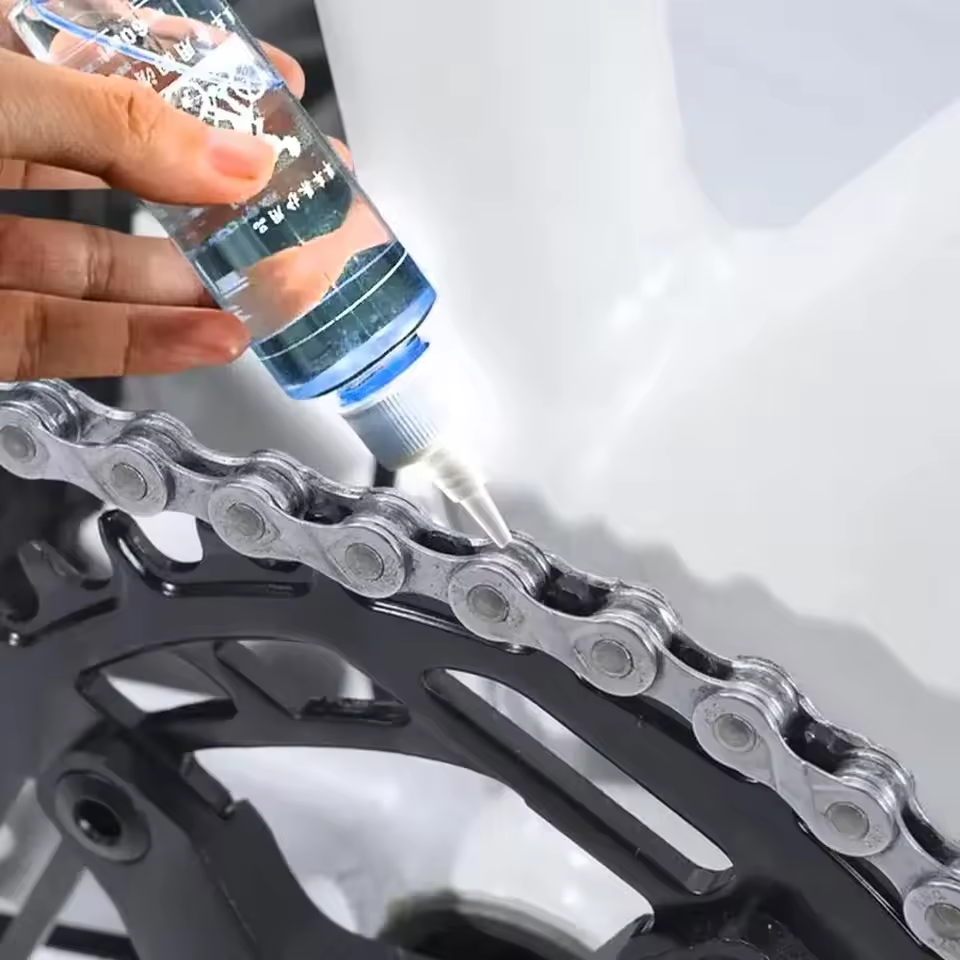
Conclusion: Elevate Your Riding Experience with Proper Chain Care
A bicycle chain lube is more than just a maintenance product—it’s a key factor in ensuring your bike’s performance, reliability, and longevity. By choosing the right lube for your riding conditions, applying it correctly, and maintaining your chain regularly, you’ll enjoy smoother shifts, reduced wear, and a more efficient ride. Whether you’re commuting through city streets or conquering mountain trails, investing in quality chain care will pay dividends in both performance and peace of mind.
Remember, the best bicycle chain lube is one that meets your specific needs and is applied consistently. Combine it with tools like a bicycle chain tool and proper maintenance habits, and you’ll keep your bike in top shape for years to come. Embrace the power of a well-lubricated chain and elevate your cycling experience today.